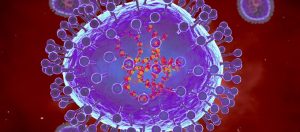European regulators are reviewing side effects of Johnson & Johnson’s single-dose COVID-19 shot, after a handful of cases of rare blood clots were reported among its recipients.
Here’s what you need to know about the vaccine:
Perhaps the most important figure to be aware of is “zero.”
That’s how many people have died from COVID-19 after receiving the shot in a massive global trial of 40,000 people aged 18 and over, compared to seven who got the placebo.
Overall, the vaccine prevented moderate to severe COVID-19 by 66.1% 28 days after the shot, but this rose to 85.4% when considering only severe disease.
What makes it most striking was that the good results against severe disease held up in both South Africa and Brazil, where concerning variants were dominant during the trial period.
ALSO READ | US health officials say no ‘causal’ link to blood clot found in J&J COVID vaccine
In terms of safety, an analysis of 44,000 people showed it was generally well-tolerated, with typical side-effects like injection-site pain, headache, fatigue and muscle pains.
In late February, the US pharma giant said that at least one case of anaphylaxis (severe allergic reaction) had been reported — and such reactions have also been recorded for other COVID-19 vaccines in rare instances.
The US Centers for Disease Control and Prevention (CDC) has advised people not to take the Johnson & Johnson shot if they have any history of severe allergic reactions.
The European Medicines Agency (EMA) said Friday it is reviewing side effects of the shot, after four cases, one fatal, of rare clots with low blood platelets were reported among its recipients.
The EMA said “it is not yet clear whether there is a causal association” between Johnson & Johnson’s vaccine and the clots.
The Pfizer and Moderna RNA-based vaccines were shown to have efficacies of around 95% against all forms of COVID-19 — but it’s still hard to make a direct comparison.
That’s because their clinical trials took place before newer variants, some of which have been shown to be less susceptible to current vaccines, were well established.
The RNA vaccines probably still have an edge, but the J&J vaccine brings important logistical advantages to the table.
It requires only one shot and can be kept long term in refrigerators, rather than freezers — especially important for developing countries.
The J&J vaccine uses a common-cold causing adenovirus, which has been genetically modified so that it can’t replicate, to carry the gene for a key part of the coronavirus.
The part is known as the “spike protein” and it’s what gives the virus its crown-like appearance.
The vaccine delivers the instructions to make this protein to human cells, and our immune systems then develop antibodies against it, preventing the virus from invading cells.
Apart from antibodies, the vaccine also elicits the production of immune T cells, which kill infected cells and help make more antibodies.
J&J’s shot is known as an “adenovirus vector vaccine” and the company previously produced a European Union-approved Ebola vaccine using the same technology.
ALSO READ | EMA has ‘not yet reached conclusion’ on AstraZeneca’s COVID-19 vaccine
Oxford-AstraZeneca and Sputnik’s shots are both adenovirus vector vaccines, too.
They all use double-stranded DNA molecules to carry genetic instructions, rather than single-stranded RNA used by Pfizer and Moderna.
DNA is more rugged, which allows these vaccines to be stored at warmer temperatures.
J&J has begun clinical testing for adolescents aged 12 to 17.
While the J&J vaccine so far has been single-dose, the company is also testing a two-dose regimen to see if it provokes a better response.
But RNA vaccines might have the edge over adenovirus vaccines when it comes to boosters.
Some scientists have raised concerns that the immune system will recognize and attack adenoviruses it has previously encountered, which in turn reduces the second shot’s efficacy.
This could become particularly important as makers look to develop variant-specific vaccines, since the adenovirus vaccine makers might need to find new vectors.






